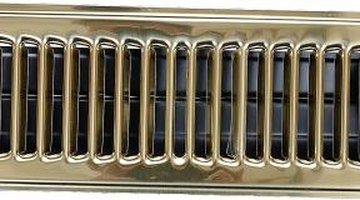The Normal Register Temperature of an Air Conditioner
Air conditioner temperature ranges depend largely on what settings you choose for them. A functioning air conditioner will operate according to the thermostat programming, which can vary temperature ranges in the house considerably. However, you can also use the register temperature of an air conditioner to test how well the unit is performing, as long as you can measure air at the source of the air conditioner.
Preparation for Testing

Wait until you have a warm day for testing the temperature of your air conditioner. In cold days, the air conditioner will not be able to function properly, and you may damage the compressor. The air temperature outside near your air conditioner unit should be above 60 degrees Fahrenheit for at least 48 hours before you start measuring the temperature of the air conditioner itself. Turn the fan to auto and set the thermostat low enough to turn the AC on.
Testing System
Wait for at least several minutes after the air conditioner has turned on. This ensures that air is cycling throughout the ductwork and enhances the accuracy of your readings. Measure the temperature in the supply and return registers, the vents where air enters the air conditioner and exits the ductwork. The supply register should show temperatures between 14 and 20 degrees cooler than the return ducts or current room temperature.
Supply Air Temperature
You can also measure the air temperature just downstream of the evaporator coils; there is often a hole in the supply plenum component for this purpose. The temperature here should be around 55 F for normal air conditioner operation. This can make it easy to quickly test potential changes in air conditioner operation.
Potential Problems
A couple of degrees difference in ranges may not be anything to worry about, but if your air conditioner falls well outside either range, this indicates a problem with performance. If the temperatures are too low, an air flow problem is generally indicated, and you may have vents that are too small. If the temperature output is too high, then the system is malfunctioning, possibly due to ice or dust buildup on the coils.
References
Writer Bio
Tyler Lacoma has worked as a writer and editor for several years after graduating from George Fox University with a degree in business management and writing/literature. He works on business and technology topics for clients such as Obsessable, EBSCO, Drop.io, The TAC Group, Anaxos, Dynamic Page Solutions and others, specializing in ecology, marketing and modern trends.
Photo Credits
- Zedcor Wholly Owned/PhotoObjects.net/Getty Images
More Articles



